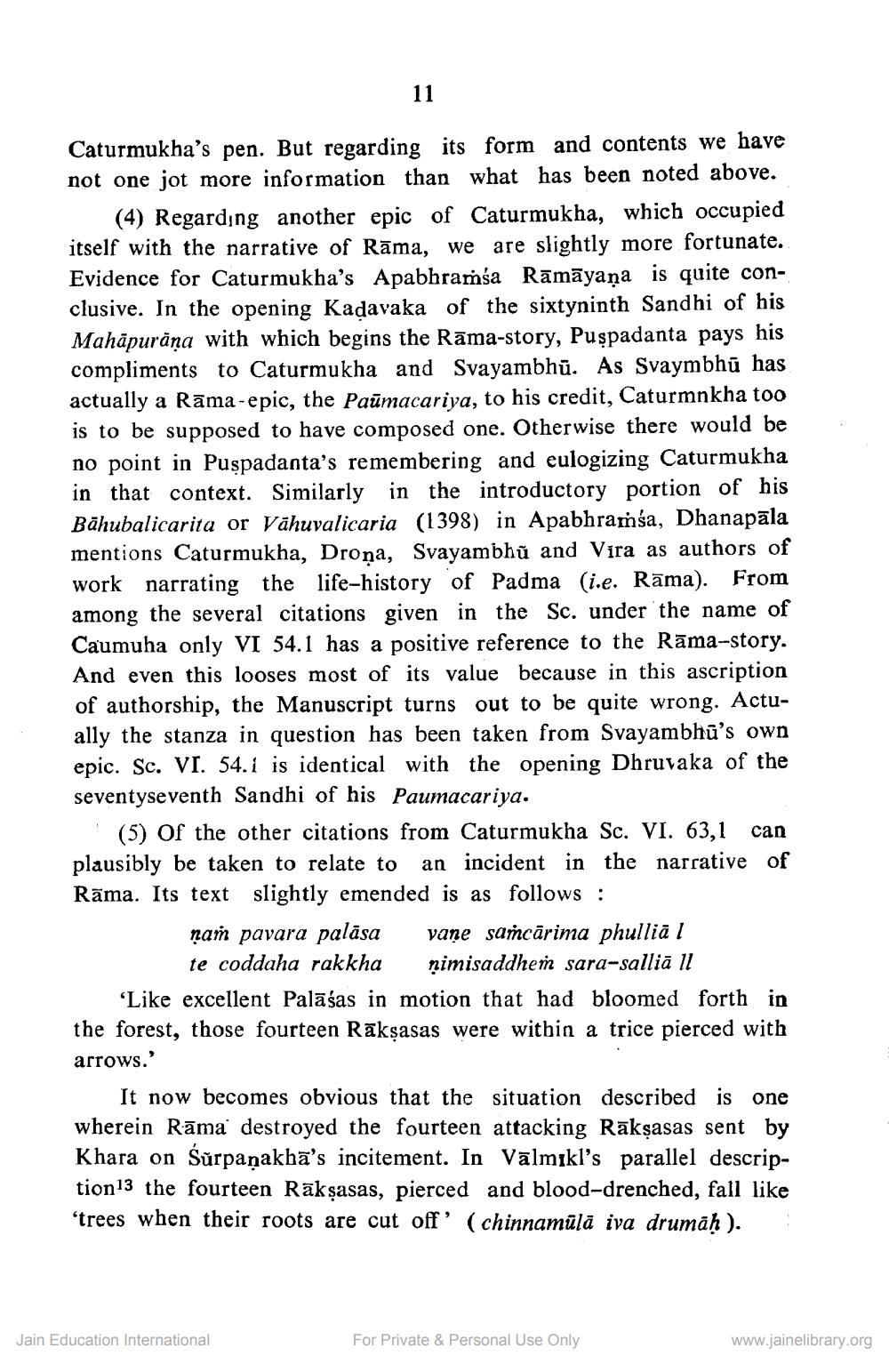________________
11
Caturmukha's pen. But regarding its form and contents we have not one jot more information than what has been noted above.
(4) Regarding another epic of Caturmukha, which occupied itself with the narrative of Rāma, we are slightly more fortunate. Evidence for Caturmukha's Apabhramsa Rāmāyaṇa is quite conclusive. In the opening Kadavaka of the sixtyninth Sandhi of his Mahāpurāņa with which begins the Rāma-story, Puşpadanta pays his compliments to Caturmukha and Svayambhū. As Svaymbhū has actually a Rāma-epic, the Paūmacariya, to his credit, Caturmnkha too is to be supposed to have composed one. Otherwise there would be no point in Puspadanta's remembering and eulogizing Caturmukha in that context. Similarly in the introductory portion of his Bāhubalicarita or Vāhuvalicaria (1398) in Apabhramsa, Dhanapāla mentions Caturmukha, Drona, Svayambhủ and Vira as authors of work narrating the life-history of Padma (i.e. Rāma). From among the several citations given in the Sc. under the name of Caumuha only VI 54.1 has a positive reference to the Rāma-story. And even this looses most of its value because in this ascription of authorship, the Manuscript turns out to be quite wrong. Actually the stanza in question has been taken from Svayambhū's own epic. Sc. VI. 54.i is identical with the opening Dhruvaka of the seventyseventh Sandhi of his Paumacariya.
(5) Of the other citations from Caturmukha Sc. VI. 63,1 can plausibly be taken to relate to an incident in the narrative of Rāma. Its text slightly emended is as follows:
ņam pavara palāsa vane samcārima phulliā l
te coddaha rakkha şimisaddhem sara-salliā ll ‘Like excellent Palāśas in motion that had bloomed forth in the forest, those fourteen Rākşasas were within a trice pierced with arrows.'
It now becomes obvious that the situation described is one wherein Rāma destroyed the fourteen attacking Raksasas sent by Khara on Šúrpanakhā's incitement. In Vālmīkl's parallel description13 the fourteen Rākşasas, pierced and blood-drenched, fall like ‘trees when their roots are cut off' (chinnamülā iva drumāḥ).
Jain Education International
For Private & Personal Use Only
www.jainelibrary.org




